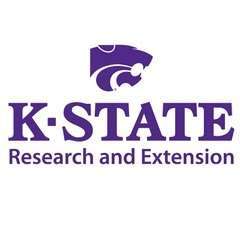K-State researchers to present findings during annual Swine Day
MANHATTAN, Kan. – Kansas State University swine nutritionists are making progress on studies that look at the best strategies for feeding sows prior to giving birth, work that they say will impact survivability and productivity in all phases of swine production.
Jason Woodworth, a swine nutritionist with K-State Research and Extension, said a trend toward increased litter sizes has led to challenges with lower birth weights, increased pigs born dead and longer farrowing periods for the sow.
“So, we’re trying to find ways that we can help overcome these challenges without negatively impacting sow performance or adding unnecessary costs for the swine producer,” Woodworth said.
Woodworth and his colleagues on K-State’s swine team will present recent findings on feeding sows just prior to farrowing during the university’s annual Swine Day, which will be held online only on Nov. 18-19.
Registration for this year’s event is available online. Organizers say they have had a record response to this year’s online format; as of Nov. 12, they have 750 registrants, including more than 300 from 35 countries.
Woodworth’s presentation will take place Nov. 18 during a series of 15-20 minute presentations focusing on applied swine nutrition. The Nov. 19 presentations focus on feed safety and feed processing.
“We have conducted a couple of large transition sow studies with commercial partners and have another one happening right now,” Woodworth said of the university’s trials with feeding pregnant sows.
There are several other studies taking place around the world on this topic, he said.
“Collectively, it does not appear that there is any specific diet formulation change that is the magic bullet to resolving the challenges faced by the sow prior to giving birth,” Woodworth said. “However, we have learned that how we feed the sow is important; increasing the frequency of meals has shown the greatest benefit. Instead of feeding one meal per day – which is common – feeding sows 2 to 4 meals results in better performance.”
He noted, however, that like all research, newer findings can change recommendations and it’s important for swine producers to stay current through such events as Swine Day.
More information on swine nutrition also is available online from K-State’s Department of Animal Sciences and Industry.
FOR PRINT PUBLICATIONS: Links used in this story
K-State Swine Day information and registration, https://www.asi.k-state.edu/events/swine-day
Swine nutrition, K-State Department of Animal Sciences and Industry, https://www.asi.k-state.edu/research-and-extension/swine
The Kansas State University Department of Animal Sciences and Industry serves students, livestock producers and the animal and food industries through teaching, research and education. The K-State ASI department prepares students for careers in the animal and food industries. The curriculum includes the study of nutrition, reproduction, genetics, behavior, meat science and food science with production, management, and agribusiness skills. For more about the K-State’s ASI department visit asi.ksu.edu.
K State Research and Extension is a short name for the Kansas State University Agricultural Experiment Station and Cooperative Extension Service, a program designed to generate and distribute useful knowledge for the well being of Kansans. Supported by county, state, federal and private funds, the program has county extension offices, experiment fields, area extension offices and regional research centers statewide. Its headquarters is on the K State campus in Manhattan. For more information, visit www.ksre.ksu.edu. K-State Research and Extension is an equal opportunity provider and employer.
Story by:
Pat Melgares
785-532-1160
melgares@ksu.edu
For more information:
Jason Woodworth
785-532-1157
jwoodworth@ksu.edu





